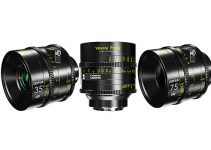Many filmmakers rely on Apple’s hardware for their video editing workstations. They’re slick and stylish, let’s get that out of the way, but there’s more to Macs than design. The foundation of the success of these machines is in the software. Ever since the beginning of the personal computer era, MacOS has made a name for itself in the field of graphics, design and content creation.
If it’s true that recent versions of Windows have more than bridged the gap and the skyrocketing prices of Apple hardware drive many to assemble much more affordable PCs, there is still a lot of value in buying an iMac. But which one exactly should you buy? The latest addition of Vega 48 graphics to the standard 580X configuration of the 2019 iMac rises many questions particularly if the bump is worth the upgrade, so Max Yuryev is here to provide the answer.
The question if the new Vega 48 is a worthy upgrade has been asked a lot around the web lately. One thing is certain, though, if the choice is between the flashy Vega 48 and an i9 chip at the heart of your Mac, toss away any doubt, the upgrade to the i9 will be far more efficient in raising the performance bar.
That being said, the first benchmarks in Yuriev’s testing are setting the Vega 48 at a rough 17/18% raw power over the 580X, although the Unigine Heaven benchmark sets the latter about 40/50% lower in the performance chart. This is happening even if the configuration of the machines (excluding the graphics card) is exactly the same.
This brings to mind a statement made on other YouTube channels that this machine would have had the Intel quicksync disabled together with the Intel integrated graphics based on the particular SKU of the CPU Apple has adopted. This information seems to be false or based on misinformation.
In fact, using software to monitor the device usage in the Mac, it is evident that the Intel chipset is not only being used, but it is also encoding making full use of the Quicksync capabilities.
Moving from benchmarks to editing suites, Final Cut and DaVinci Resolve are marking a 20% improvement over the other card due to the calculations being distributed over to the GPU.
Premiere Pro CC, on the other hand, that relies on the CPU for all the heavy lifting, makes almost no difference in the export times between these two configurations. The time to export the clips is almost the same between the two machines. So, do you really need to spend an extra $450 for the Vega 48 upgrade?
Probably not if you’re predominantly editing 4K videos using H.264 codec in Final Cut. But if you opt for Premiere Pro CC or DaVinci Resolve and tend to work with more advanced system-intensive codecs on a daily basis, then this upgrade would be a real no-brainer especially when you consider the fact that you’ll get twice as fast performance in certain cases.
[source: Max Yuryev]
B&H Order Links:
Apple 27″ iMac Vega 48 with Retina 5K Display (Early 2019)
Apple 27″ iMac Radeon Pro 580X with Retina 5K Display (Early 2019)
Disclaimer: As an Amazon Associate partner and participant in B&H and Adorama Affiliate programmes, we earn a small comission from each purchase made through the affiliate links listed above at no additional cost to you.
Claim your copy of DAVINCI RESOLVE - SIMPLIFIED COURSE with 50% off! Get Instant Access!





